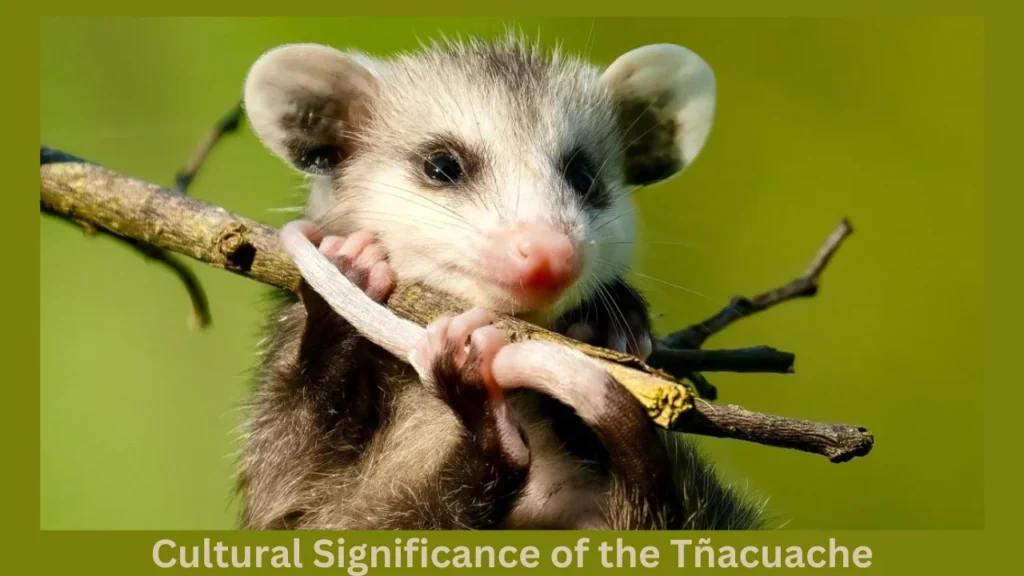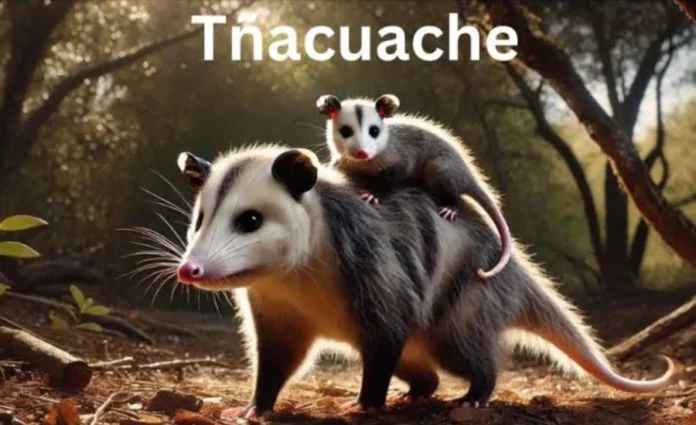Tñacuache Pest Control And Seed Dispersal
The tñacuache, commonly referred to as the opossum in English, is one of the most fascinating creatures found in the Americas. Despite its often misunderstood nature, the tñacuache plays an essential role in maintaining the balance of ecosystems. This marsupial has a unique combination of characteristics that make it both intriguing and vital to its environment. In this article, we will explore everything about the it, from its physical traits to its ecological significance, cultural importance, and much more.
Physical Characteristics of the Tñacuache
The tñacuache is a medium-sized mammal that typically weighs between four and fourteen pounds. Its most recognizable features include its pointed snout, round ears, and prehensile tail. The tail is a critical part of its anatomy, as it helps the it climb trees and carry small objects. The it fur is usually grayish, though some species may exhibit different shades, and its underbelly is typically lighter in color.
One of the most fascinating aspects of the it is its ability to adapt to its surroundings. These nocturnal creatures are equipped with sharp teeth and claws, enabling them to forage for food effectively. Their eyes are also well-suited for low-light conditions, making them excellent nighttime hunters. The it diet is diverse, consisting of fruits, insects, small mammals, and even carrion.
ALSO READ: H Style Cat Harness On Chicken Safety Tips And Benefits
Habitat and Distribution
The it is native to the Americas and is particularly common in Mexico, Central America, and parts of the United States. These marsupials are incredibly adaptable and can thrive in a variety of environments, including forests, grasslands, and urban areas. The it adaptability is one of the reasons it has been able to coexist with humans, often seen foraging in suburban neighborhoods or scavenging through trash bins in cities.
This creature is also a skilled climber, utilizing its prehensile tail and opposable thumbs to navigate trees and other elevated structures. This ability allows the it to escape predators and access food sources that other animals cannot reach. Its adaptability and resilience make the tñacuache an important part of both natural and human-altered landscapes.
The Unique Reproductive System
As a marsupial, the it has a distinct reproductive system. Female it carry their young in a pouch, much like kangaroos. The gestation period is incredibly short, lasting only about 12 to 13 days. After birth, the tiny, underdeveloped offspring crawl into the mother’s pouch, where they continue to grow and develop for several weeks.
A single female it can give birth to a large number of young in one litter, often ranging from eight to thirteen offspring. However, not all of them survive, as the pouch can only accommodate a limited number of developing babies. Once the young outgrow the pouch, they often cling to the mother’s back as she moves around in search of food.
ALSO READ: Harmoniclast .Com Purpose Functionality Tools And Services
The Role of the Tñacuache in the Ecosystem
The it is often called a “nature’s cleanup crew” due to its scavenging habits. By feeding on carrion and decomposing organic matter, the it helps to recycle nutrients back into the ecosystem. This behavior reduces the spread of diseases that could arise from rotting carcasses and decaying materials.
In addition to scavenging, the it diet includes a variety of pests such as ticks, insects, and rodents. By consuming these creatures, the it naturally controls their populations, making it a crucial ally for both farmers and urban dwellers. Moreover, the it plays a role in seed dispersal by eating fruits and excreting seeds in different locations, contributing to plant diversity and growth.
Cultural Significance of the Tñacuache

The it holds a special place in the folklore and traditions of many cultures, particularly in Mexico. One of the most famous legends involving the it tells the story of how it brought fire to humans. According to the tale, the it stole fire from the gods and carried it in its hairless tail, enduring burns to ensure humanity’s survival. This story highlights the it role as a symbol of resilience, resourcefulness, and sacrifice.
In some regions, the it is also considered a sign of good luck. Farmers, for instance, often welcome its presence on their land, knowing it helps control pests and maintain ecological balance. However, misconceptions about the it persist, with some people viewing it as dirty or harmful. These myths underscore the need for better education about the it true nature and benefits.
Defense Mechanisms and Survival Strategies
The tñacuache is famous for its unique defense mechanism known as “playing possum.” When threatened, the it can enter a catatonic state that mimics death. This involuntary reaction, combined with the release of a foul-smelling fluid from its anal glands, deters many predators. The “playing possum” strategy is highly effective against predators that rely on movement to identify prey.
Additionally, the it climbing abilities and nocturnal habits help it avoid danger. Its keen sense of smell and hearing further enhance its ability to detect threats and locate food. These survival strategies have allowed the it to thrive in environments where other species might struggle.
Table: Key Facts About the Tñacuache
| Feature | Details |
|---|---|
| Scientific Name | Didelphis virginiana |
| Common Name | Opossum, Tñacuache |
| Habitat | Forests, grasslands, urban areas |
| Diet | Omnivorous (fruits, insects, carrion) |
| Lifespan | 2 to 4 years in the wild |
| Unique Trait | Prehensile tail, ability to “play possum” |
Misconceptions and Human Interaction
Many people mistakenly believe that it are aggressive or dirty animals. In reality, these creatures are docile and non-aggressive, posing little to no threat to humans. They are also remarkably clean, spending a significant amount of time grooming themselves. These misconceptions have led to unnecessary fear and hostility toward it, often resulting in their mistreatment or eradication.
Educating communities about the ecological importance of the it can help change these perceptions. Simple measures, such as securing trash bins and avoiding the use of harmful pesticides, can encourage peaceful coexistence with these beneficial creatures. Understanding and appreciating the role of the it in nature can lead to more sustainable interactions between humans and wildlife.
Conservation Efforts and Challenges
While the it is not currently considered endangered, it faces several challenges, including habitat loss, road accidents, and human persecution. Urbanization and deforestation have significantly reduced the natural habitats available to it, forcing them to venture into human settlements in search of food and shelter. This increased interaction often leads to conflict and misunderstanding.
Conservation efforts aimed at preserving natural habitats and promoting coexistence are crucial for ensuring the long-term survival of the it. Public awareness campaigns and educational programs can play a vital role in changing attitudes toward these misunderstood creatures. By protecting the it and its habitats, we also safeguard the ecological services it provides.
Frequently Asked Questions
What is a tñacuache?
A tñacuache, commonly known as an opossum, is a marsupial native to the Americas, recognized for its prehensile tail and scavenging habits.
Why are tñacuaches important for the environment?
Tñacuaches play a key role in ecosystems by controlling pest populations, dispersing seeds, and cleaning up carrion.
How do tñacuaches defend themselves?
When threatened, tñacuaches use a unique defense mechanism called “playing possum,” where they mimic death to deter predators.
Conclusion
The tñacuache is a remarkable creature that deserves recognition and appreciation for its many contributions to nature and human society. Its role as a scavenger, pest controller, and seed disperser highlights its ecological importance, while its cultural significance underscores its value in human history and folklore. Despite facing numerous challenges, the tñacuache has proven to be a resilient and adaptable species.

